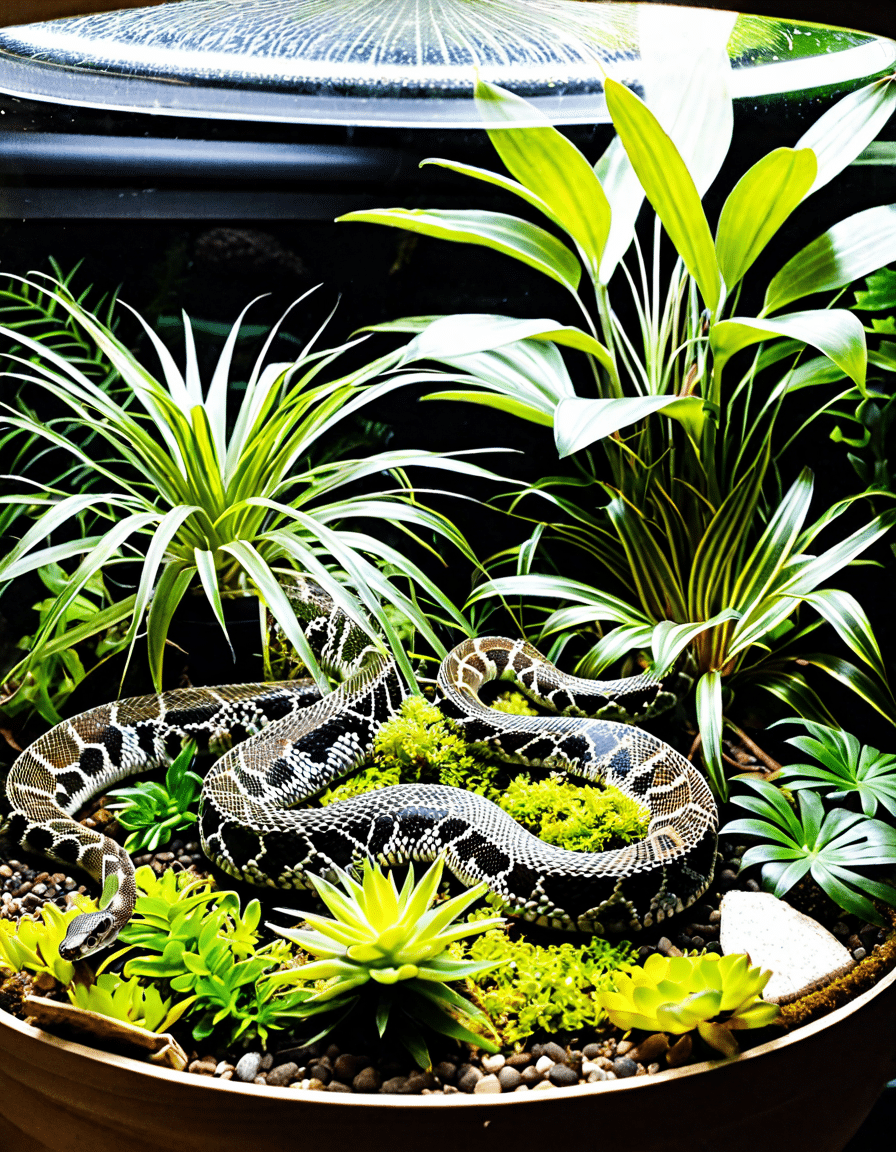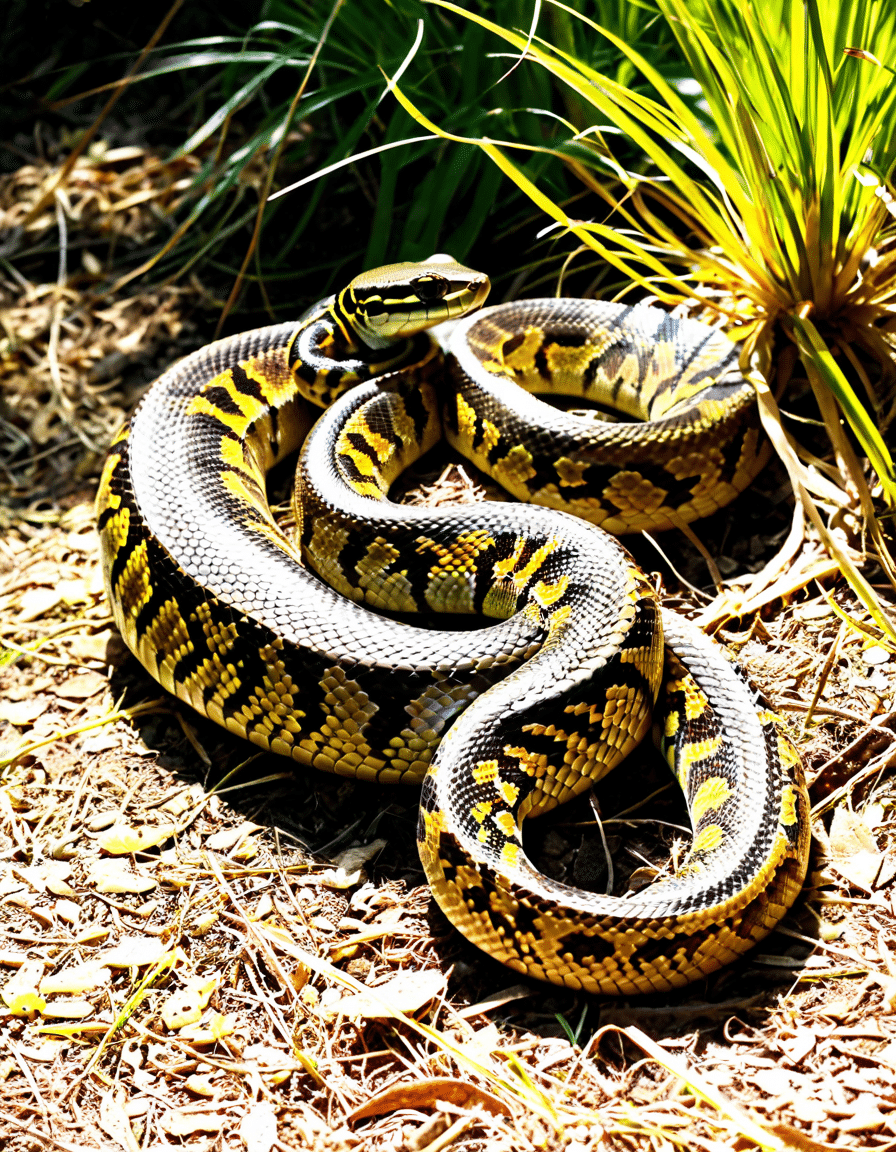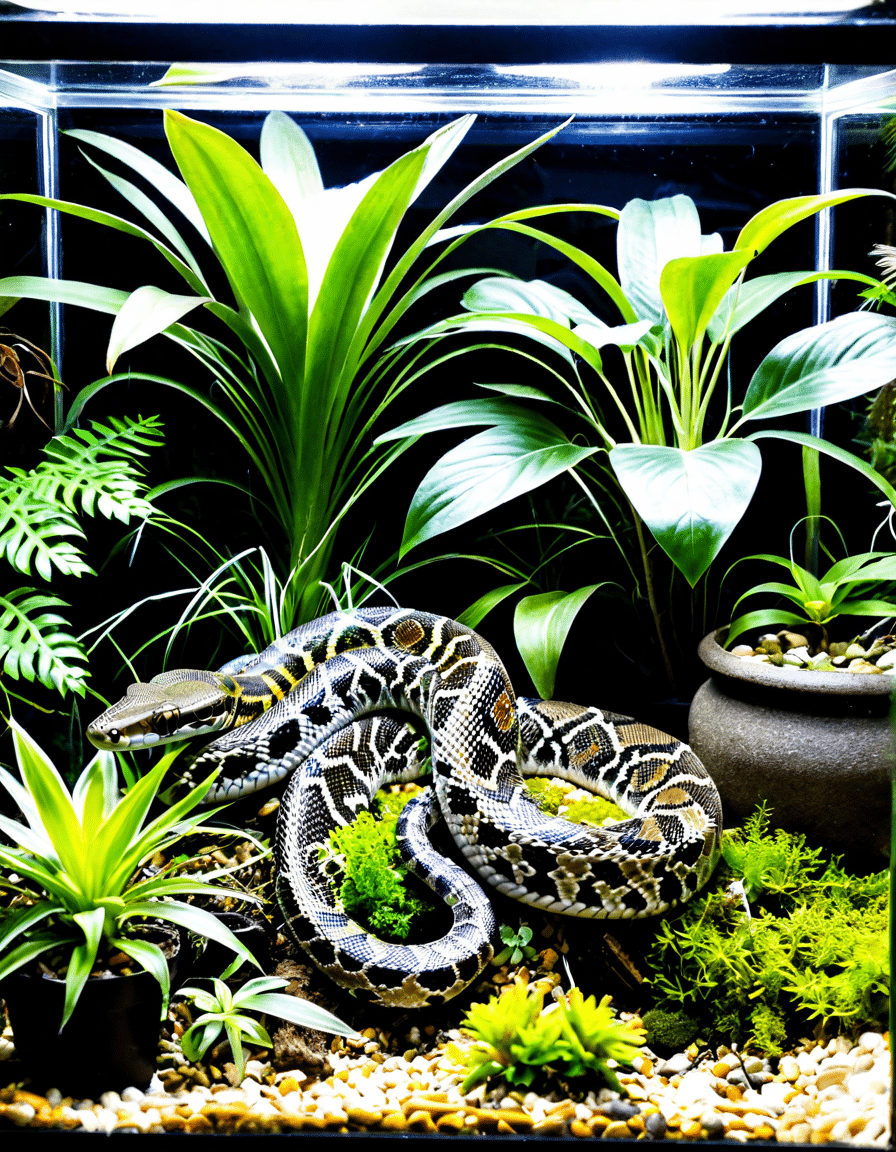If you’re considering adding a pet snake to your family, the pantherophis guttatus, commonly known as the corn snake, might just be the perfect choice! With their stunning appearance and friendly nature, these reptiles have captured the hearts of pet owners for generations. This comprehensive guide will walk you through everything you need to know about caring for your corn snake, from their vibrant colors to their essential care requirements.
1. The Fascinating World of Pantherophis Guttatus
Appearance and Color Variations
When it comes to visual appeal, the pantherophis guttatus delivers in spades! Corn snakes are renowned for their eye-catching appearance, featuring patterns and hues that can vary immensely. The classic corn snake showcases a coral-orange base with bold red saddles down its back, but various morphs exist due to selective breeding.
Among the most popular morphs is the anerythristic corn snake, characterized by a lack of red pigmentation, resulting in a lovely grayish appearance. Another favorite is the snow corn snake, which boasts a stunning white and yellow palette. These striking color variations demonstrate the incredible potential found within the pantherophis guttatus species.
Understanding how these colors are produced can enhance your appreciation for corn snakes. Breeders work diligently by selecting snakes with specific traits to achieve these beautiful morphs. This artful blend of genetics and aesthetics creates truly unique pets.

2. Top 5 Care Essentials for Your Pantherophis Guttatus
1. Habitat Setup
Creating a comfortable habitat for your corn snake starts with the right substrate. You might be tempted to use paper towels for ease, and while they do the job, consider using eco-friendly substrates like aspen shavings. They not only offer better comfort but also help in maintaining humidity levels.
Your snake’s enclosure size should be appropriate for their age: hatchlings thrive in a 10-gallon tank, while adults need at least a 40-gallon tank. Ensure that it has secure hiding spots for your corn snake to retreat, as this provides a sense of security.
2. Temperature and Humidity
Proper temperature and humidity are crucial for your snake’s health. Corn snakes thrive in a temperature gradient ranging from 75°F to 85°F, with a basking area reaching up to 90°F. Utilizing a heat lamp or an under-tank heater can help maintain this thermal environment.
Also, don’t forget about humidity! Aim to keep humidity levels between 40% and 60%. This balance is important for shedding and overall health. Regular misting and providing a shallow water dish can effectively help achieve these conditions.
3. Feeding: What to Know
Your corn snake’s diet primarily comprises pre-killed or live mice. Brands like ReptiBites offer quality frozen mice tailored for snack-sized servings. While live prey can provide exercise and stimulation, it’s often safer and more convenient to feed pre-killed options.
Snakes typically feed every 7-14 days, with the size of the mouse dictated by the snake’s girth. Overfeeding can lead to obesity and health issues, so keep track of their feeding schedule and adjust as necessary.
4. Health Monitoring
Monitoring your corn snake’s health is vital. Common issues include respiratory infections, which can be spotted by wheezing or excessive mucus. Regular check-ups at a reptile vet can help prevent or catch these issues early.
Another aspect to monitor is their shedding process. Ensure that your snake sheds its skin in one piece; incomplete sheds can cause stress or skin problems. Providing an adequate humidity level and rough surfaces can greatly assist in proper shedding.
5. Behavioural Enrichment
To ensure your corn snake leads a fulfilling life, consider adding climbing branches and hide boxes to their enclosure. These features encourage natural behaviors and give your snake options for exploration.
Cinnamon and birch branches are great for climbing. Moreover, placing these accessories in an inviting manner can create cozy hiding spots, enhancing your snake’s mental well-being.
3. Pantherophis Guttatus Versus Other Popular Snake Breeds
Pantherophis Guttatus vs. Thamnophis Elegans
When choosing a snake, you might wonder how the pantherophis guttatus stacks up against other breeds, like the thamnophis elegans, or the garter snake. Both snakes have unique care requirements and temperaments that suit different owners.
Corn snakes tend to be more docile and forgiving, making them suitable for first-time snake owners. They handle stress better than garter snakes, which can be more skittish. On the flip side, garter snakes are often easier to feed since they can thrive on a diet of fish and worms, which some owners find easier to source.
In terms of care, both snakes need proper humidity and warmth, but corn snakes offer more visual interest with their diverse morphs and vibrant colors. For beginners, you can’t go wrong with the friendly and adaptable corn snake!

4. Interacting with Your Pantherophis Guttatus
Handling Tips for Success
Handling your corn snake can be one of the most rewarding parts of ownership, provided you do it right. Always pick up your snake gently, supporting its body with both hands—this helps prevent stress or injury.
Gradual exposure is essential to build trust and comfort. Allow your snake to become accustomed to your presence, offering treats for positive reinforcement. Over time, this approach fosters a strong bond between you and your snake.
Most importantly, when handling your reptile, avoid wild movements and sudden noises; snakes can be easily startled. Remember to wash your hands before and after handling to keep both you and your snake healthy.
5. The Impact of Pantherophis Guttatus on Ecosystems
Role in Native Habitats
The pantherophis guttatus plays an important role in its native ecosystem. As a predator, it helps control rodent populations, which can prevent overpopulation of these animals and reduce crop damage in farming areas.
In the wild, corn snakes are primarily nocturnal and hunt small mammals, birds, and even insects. Their presence in the environment helps maintain the balance of prey species, making them a crucial part of the food chain.
Being aware of their ecological importance adds depth to your understanding of corn snakes, showing that they’re not just pets—they’re vital contributors to their native habitats!
6. Addressing Common Concerns: Myasthenia Gravis in Dogs and Other Issues
Pet Ownership Overlap
As a reptile owner, you might also have furry friends at home, like cats or dogs. If you own a cytzatoon felis or a playful chlorophytum comosum cat, it’s essential to know how various pet health concerns can impact your home.
One serious condition to be aware of in dogs is myasthenia gravis, which affects muscle control and can lead to challenges for dogs needing extra care. While reptiles and dogs don’t share health concerns directly, understanding each pet’s requirements and limitations is key to a harmonious household.
Ensuring that all your pets—be it corn snakes or your quirky frog like litoria caerulea—receive proper care enhances their individual health and supports a peaceful coexistence among species.
7. Benefits of Keeping Pantherophis Guttatus
Educational Insight for Families
Corn snakes offer families educational opportunities. Kids and adults alike can learn about reptile care, anatomy, and behavior through direct interaction. They spark curiosity about biology and the natural world, making them fantastic companions for science projects and learning experiences.
These snakes are not just pets; they can be conversation starters! Family members can discuss their morphs, habitat, and ecology, promoting teamwork when it comes to caring for this unique creature. Their captivating colors and patterns can inspire young ones to develop a sense of responsibility.
When children are involved in the care process—like feeding and habitat maintenance—they learn valuable life skills and respectful treatment of animals, fostering empathy and responsibility that lasts a lifetime.
Wrapping Up the Brilliant Maze of Colors: Why Choose a Pantherophis Guttatus?
So, in a pet care landscape full of options, the pantherophis guttatus really shines, not just for its fabulous appearance but also for its manageable care needs and adaptability. Recognizing the dynamic bond between humans and reptiles deepens your appreciation for these fascinating creatures.
As you journey through pet ownership—whether nurturing a friendly corn snake or a charming cat With purple eyes, the joy remains universal. Corn snakes are vibrant, engaging, and surprisingly easy to care for. So, roll up your sleeves and dive into the colorful world of pantherophis guttatus—after all, who wouldn’t want to share their living space with such a delightful companion?
Fun Trivia and Interesting Facts About Pantherophis Guttatus
Did You Know?
Pantherophis guttatus, better known as the corn snake, is widely celebrated for its stunning array of colors and patterns. These snakes can thrive in various habitats, from forests to grasslands, showcasing their adaptability. Interestingly, they were once believed to be a single, uniform species, but recent genetic studies have shown that the diverse color morphs represent a broader range of unique traits. If you’re wondering how this relates to other animals, consider how even dog anti-diarrhea medicine varies depending on the specific needs of different breeds—adaptability in all forms!
Colorful Legends
Corn snakes are often confused with the more venomous copperhead due to their similar appearance. However, they’re completely harmless and can even be beneficial for your yard, as they help control rodent populations. Imagine having a little pest manager slithering around—now that’s a conversation starter! Speaking of unique experiences, if one were to explore the life of public figures, documents like the Where Is Wendy williams documentary certainly tell a captivating tale, echoing the intriguing stories behind the corn snake’s survival strategies.
Fascinating Facts
In captivity, pantherophis guttatus can live for over 20 years with proper care and a suitable environment—unlike the short coffin Nails trend that many might follow. Setting up a living space for these snakes, such as finding the right axolotl tank size, reminds us that every pet, terrestrial or aquatic, has its own needs and quirks. Corn snakes don’t just look good; they’re low-maintenance and perfect for beginners, like a well-fitting pair of business casual shoes that’s both stylish and comfortable.
So next time you’re researching snake care or picking out your next pet, remember just how vibrant and engaging the corn snake truly is, thanks to its fascinating traits and behaviors. With pantherophis guttatus, there’s more than meets the eye!



